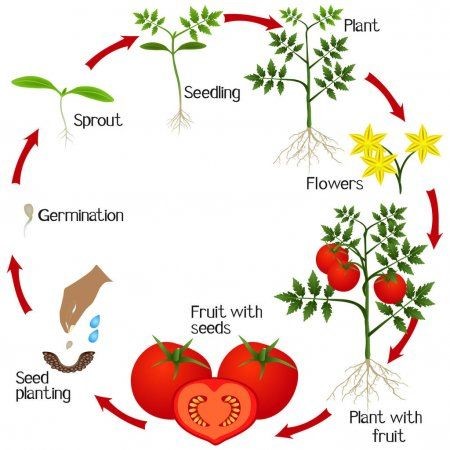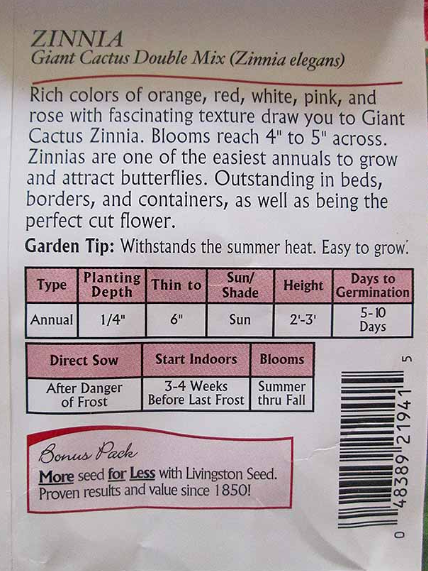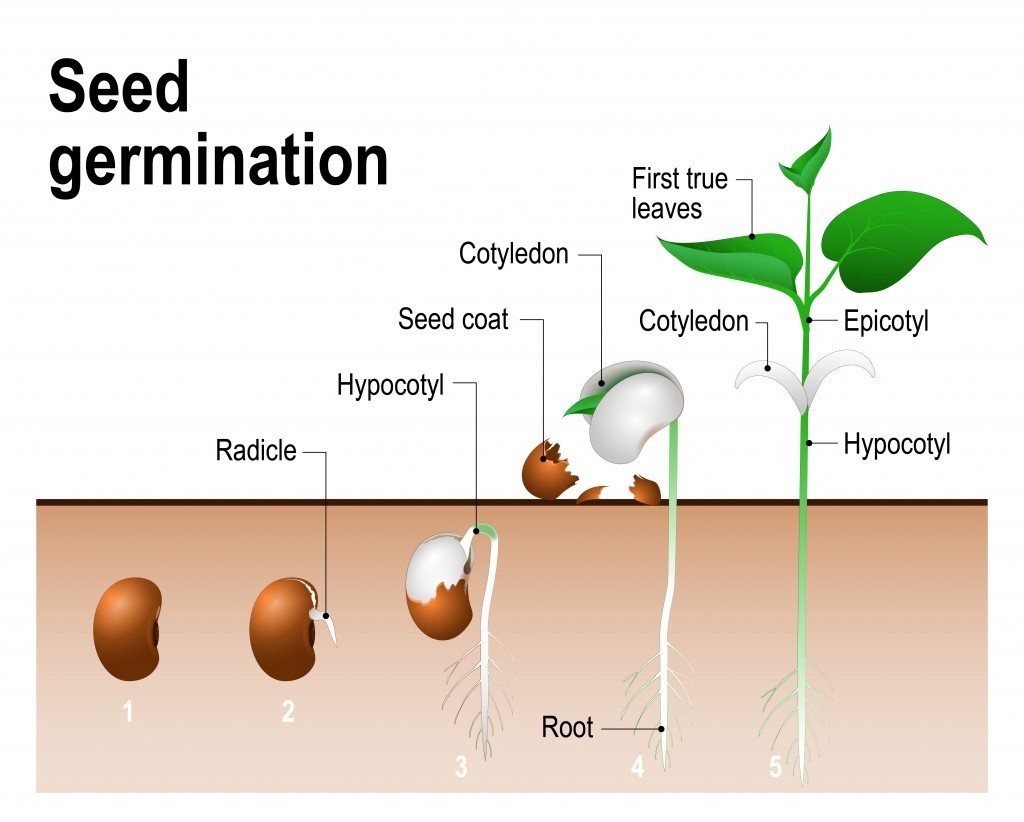
Seeds Information

A number of plants, particularly vegetables, annuals, and herbs, can be grown from seed. There are several advantages to propagating plants from seed. Seeds are relatively inexpensive, allowing the home gardener to get many plants for the price of a few transplants. Additionally, selection of transplants or plant materials available for sale can be limited to just a few varieties. Growing plants from seed allows the gardener many choices for the home garden.
The process of growing more plants from seed is known as sexual propagation. Seed or sexual propagation is dependent upon the genetic combination of male and female parts of the flower and is a result of pollination. Pollen from male anthers is combined with the egg in the female ovary, and seed is produced. Seeds described as "open pollinated" result from random pollination that occurs from wind or insect activity. They may appear to look like the parent plant, but they actually have minor differences that are referred to as "variability."
Just like people, seeds produce plants that resemble the parent but are genetically different. Seeds referred to as "F1 hybrids" are the result of controlled, known crosses of plants that produce the same results each time. These hybrids often have characteristics that make them a unique or superior plant, such as increased vigor, disease resistance, flavor, flower color, or uniform growth. Hybrid seed may cost more than open-pollinated types. If you save the seeds of hybrid plants, the resulting plants may have some similarities to the hybrid parents, but appearance and growth is usually different. Therefore, if you desire the features of the hybrid plant, purchase and plant new seed each year.
Seeds have three main parts. The outer seed coat protects the seed, while the cotyledons or seed leaves provide a food source during germination. The embryo is the young plant. Mature seeds will germinate when exposed to favorable conditions.
Seeds Selection
Start with good quality seed from a reliable dealer. Quality seed is true to cultivar/variety name, and does not contain contaminants, such as weed seed, insect casings, soil particles, or plant pulp. Make the best plant selection for the existing growing conditions by researching the many varieties available. Seed can be purchased for a wide variety of plants and characteristics, such as color, size, and growth habit. Many varieties will even be resistant to certain diseases. Choose varieties suitable for your area that will reach maturity before frost, survive heat, and tolerate present growing conditions. It is best to purchase only enough seed for use in the current season. Seed can be stored from year to year, but germination percentage and seedling vigor will decline with age and improper storage conditions. Store excess seed in a cool, dry place. Seeds in paper packages are best stored in containers that can be sealed tightly. A low-humidity environment at 40 degrees F is best for seed storage, such as the crisper drawer of a refrigerator.
Some seed can be purchased in treated form. One type of treatment is a fungicide coating, which increases the seed's chance for survival by protecting it from disease organisms in the soil. Small seed may come in a pelleted form, with a coating of clay or other inert material that makes the seeds easier to sow by hand and get a more uniform stand with fewer plants to thin. Legume seed can be treated with nitrogen-fixing bacteria, which help plants draw nitrogen from the air and deposit it in their roots. Similar to hybrid seed, treated seed is also more costly, but can be worth the extra expense.
Reading a Seed Package
Commercial seed packages include a lot of helpful information. Look for the year the seeds were packed, usually printed or stamped on the envelope (will appear as "sell by" or "grown for"). Look for seeds packed for the current season. Additionally, the packet typically indicates how far apart to space seeds within a row, the depth for sowing the seeds, days to germination, and instructions for thinning seedlings. Seed packages can be retained as part of garden records for future reference


Germination is the process of the embryo emerging from the seed. It starts with imbibition, or the absorption of water. Germination is heavily influenced by four environmental factors, including water, oxygen, light, and temperature.
Water
Water is critical for the first step in germination. Without water, seeds will remain dormant. The amount of water is critical; too much water causes seeds to rot, and too little water causes embryos to die. Adequate, continuous moisture is essential to germination. Misting seeds with a mist nozzle or a hand-held spray bottle provides light, even, gentle moisture without disrupting seeds. Covering seeds with a thin layer of vermiculite or peat moss helps ensure good seed-to-media contact and helps prevent the embryo from drying out. Keep the humidity high around germinating seeds by covering pots or flats with a clear humidity dome or enclosing plants in clear plastic bags. Remove plastic bags as the seeds germinate and seedlings emerge.
Oxygen
Viable (live) seeds actively respire, releasing carbon dioxide and consuming oxygen. As germination proceeds, respiration increases and more oxygen is needed. Seed-starting media needs to drain well enough to meet this need for oxygen. If the media (i.e., garden soil) is too heavy or too wet, seeds will not have the oxygen they require, and germination may be greatly slowed or stopped (death).
Light
Some seeds require light to germinate, while others require darkness. Some seeds have no preference at all. Look in catalogs and seed packets for specific information for the seeds being grown. If a seed requires light for germination, sow the seeds on the soil surface. If a seed requires darkness, cover it lightly with a layer of fine peat moss or vermiculite.
Temperature
Temperature affects the number of seeds that germinate as well as how fast the seeds germinate. Some seeds have a very specific temperature range for germination, while others will germinate over a broad range of temperatures. Seed packets and catalogs generally list the optimum temperature for germination. A good rule of thumb is 65 to 75 degrees F for germinating most seeds. To monitor soil or media temperature, use a thermometer with its probe in the middle of the container or flat. To raise temperature, use moisture-proof heating mats or cables under flats or containers (following manufacturer's instructions). Alternately, flats can be placed in warm spots in the home, such as near a radiator, for the germination process. Then move the seedlings to a bright location so they can continue to develop. Monitor temperature and moisture so that embryos and seedlings remain viable. After germination, temperature should be gradually lowered to 65 degrees F.




